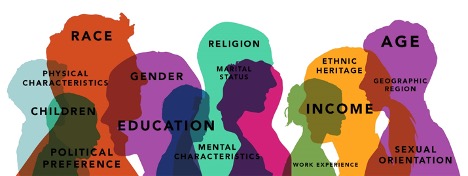
At the School District of Lancaster, we strive to build a culture where equity, belonging, and inclusion are not just aspirations but lived experiences. As a community of learners, both students and staff, we embrace the ongoing journey of reflection and growth. Our shared responsibility is to ensure we are shaping spaces where every student, family, and staff member feels valued, respected, and seen for who they truly are. This requires us to not only challenge the systems that create inequities but also look inward to examine the unconscious biases that may guide our thoughts and decisions.
This week’s DEBI’s Corner focuses on implicit bias—the unconscious attitudes and stereotypes that subtly shape our interactions and decisions. Understanding these biases, with intentionality and action, is an essential step in our journey toward fostering a school culture that embraces every individual’s full humanity and dismantling those barriers to build a school environment where all individuals can thrive.
What Is Implicit Bias?
Implicit bias refers to the automatic and unconscious associations we make about people based on characteristics such as race, gender, age, ability, or socioeconomic status. These biases are shaped by societal norms, cultural messages, and personal experiences. Unlike explicit bias, which is deliberate and conscious, implicit bias operates beneath our awareness, often influencing us in ways we may not immediately recognize.
While implicit bias is universal and natural, its consequences can be profound, especially in education. If left unchecked, bias can unintentionally create barriers to equity, inclusion, and belonging, affecting students’ learning experiences, families’ sense of connection to the school community, and even staff morale. It doesn’t always align with our stated values, but it can impact our decisions and behaviors.
's-Corner--Understanding-Implicit-Bias/2720990841-Page10-Graphic-1.jpg)
Implicit bias often hides in plain sight and can show up in various ways across the educational landscape, often creating unintentional barriers to equity.
Confirmation Bias
- What It Is: The tendency to seek or interpret information in a way that confirms existing beliefs.
- Example: A teacher may expect a student who struggles in one subject to perform poorly across all subjects, leading to fewer opportunities for that student to demonstrate growth or strengths.
2. Affinity Bias
- What It Is: Favoring individuals with whom you share similar interests, experiences, or backgrounds.
- Example: A teacher may unconsciously build stronger relationships with students who share their cultural background or interests, inadvertently neglecting to invest the same energy in students from different backgrounds.
3. Stereotype Bias
- What It Is: Generalizing characteristics or abilities based on a group’s perceived traits.
- Example: Assuming that students from certain racial or ethnic groups will excel in sports but struggle academically, or expecting girls to excel in reading but not math or science.
Consider these examples:
- Classroom Expectations:
- Assuming boys are naturally better at STEM subjects or that girls are less interested in technology.
- Believing that students who are English Language Learners (ELLs) are less capable academically, regardless of their potential.
- Disciplinary Actions:
- Being more likely to discipline students of color for behaviors that are overlooked or addressed differently with their peers.
- Documenting minor infractions without considering restorative practices, which could build trust and reduce harm.
- Family Engagement:
- Assuming that families who don’t attend parent-teacher conferences or respond to emails are disengaged in their child’s education, ignoring potential barriers like language differences, work schedules, or cultural norms.
- Cultural Representation:
- Highlighting dominant cultural traditions (e.g., Christmas trees) while unintentionally overlooking or undervaluing other significant holidays and traditions celebrated by our community members.
These biases are not always intentional, but their impact is real, and addressing them is critical to creating a more just and inclusive environment for everyone in our district.
's-Corner--Understanding-Implicit-Bias/2505045688-ieee-takes-steps-to-address-implicit-bias-in-stem.jpg)
The Impact of Implicit Bias
Implicit bias can have far-reaching effects, shaping the trajectory of students’ academic and personal growth:
- On Students:
A student who perceives bias through lowered expectations, disproportionate discipline, or a lack of representation may internalize these messages, leading to feeling excluded, misunderstood, disengaged, lower self-esteem, or a diminished sense of belonging. - On Families:
Families who feel judged or excluded may hesitate to engage with their child’s school, missing out on opportunities to collaborate in their child’s education. - On Staff:
Bias can strain workplace relationships, erode trust, and perpetuate hiring, mentoring, and leadership opportunities inequities. Staff may feel unseen or unsupported if implicit bias shapes workplace interactions and decisions
Strategies for Addressing Implicit Bias
1. Commit to Self-Awareness and Reflection
The most impactful work begins with looking inward. Regularly examine your thoughts, behaviors, and practices.
-
Reflect Often: Regularly assess how your attitudes, behaviors, and decisions align with your values of equity and inclusion.
- Journaling: Track your initial impressions of students, families, and colleagues and reflect on how these impressions influence your actions.
- Pattern Analysis: Use data to assess grading, participation, or discipline disparities. Look for trends that might indicate bias.
- Scenario Reflection: Consider how you might respond to a situation differently if the individuals involved came from different backgrounds.
2. Develop Cultural Competence
Actively seek knowledge and understanding of the diverse cultures, traditions, and experiences represented within our district.
- Professional Development: Attend workshops, read books, and participate in discussions that deepen your understanding of implicit bias and cultural competence.
-
Representation in Curriculum: Ensure that books, posters, and lesson plans that incorporate diverse voices, cultures, and perspectives into your curriculum and teaching materials.
- Inclusive Instruction: Design lessons that are differentiated to meet the needs of all learners, including those who require enrichment, support, or accommodations.
- Engage Families: Partner with families to understand and honor their unique cultural values and expectations for their children.
- Learn from Colleagues: Collaborate with colleagues with different experiences or perspectives.
3. Create Space for Feedback and Dialogue
Building an inclusive community requires collaboration and open communication.
- Student Equity Teams: Create equity teams to give students a voice in identifying and addressing biases within the school environment’s school culture, policies, or practices.
- Family Input: Provide opportunities for families to share their traditions, perspectives, and concerns, ensuring all voices are valued.
- Peer Collaboration: Partner with colleagues to observe and discuss biases that may arise in teaching or decision-making practices.
- Standardize Decision-Making: Use clear rubrics and checklists to ensure consistency and fairness in grading, discipline, and other key decisions.
4. Embed Bias-Reduction in Daily Practices
Small, intentional actions can lead to significant change.
- Pause and Reflect: Before making a decision, ask yourself: “Am I being fair? What assumptions might be influencing me?”
- Check Your Language: Avoid language that reinforces stereotypes, such as “I didn’t expect you to do so well on this.”
- Objective Criteria: Use clear, consistent rubrics for grading and discipline to reduce the influence of subjective judgments..
- Assume Positive Intent: Approach every interaction with the belief that students, families, and colleagues are doing their best with the resources they have.
- Diversify Relationships: Intentionally build connections with students and colleagues who may be outside your comfort zone.
Action Step for the Week: Perspective-Taking Challenge
This week, I encourage you to step into the shoes of a student, family, or colleague whose background differs from your own. Spend a few minutes reflecting on their experiences:
- What challenges might they face in navigating our school environment?
- How might implicit biases affect their interactions or opportunities?
- What changes can you make to ensure they feel valued and supported?
Write down your reflections and consider sharing them during your next team or Professional Learning Community (PLC) meeting.
's-Corner--Understanding-Implicit-Bias/3703889898-Untitled-design--1-_1733322294636.png)
Together, We Can Make a Difference
Understanding implicit bias is not about blame or guilt—it’s about growth and accountability. It requires ongoing effort, reflection, and action. By acknowledging and confronting our biases, we can create a district culture where every student, family, and staff member is seen, heard, and celebrated.
Let’s work together to turn our commitment to diversity, equity, belonging, and inclusion into a practice embedded in every corner of SDoL. I challenge each of us to reflect deeply, act courageously, and embrace the discomfort that comes with growth. Together, we can create a district where equity, belonging, and inclusion are not just ideals but lived realities.
Have thoughts, feedback, or ideas for DEBI’s Corner? I’d love to hear from you. Let’s continue this journey, hand in hand.
Click Here to submit a topic and details. We will credit your submission.
